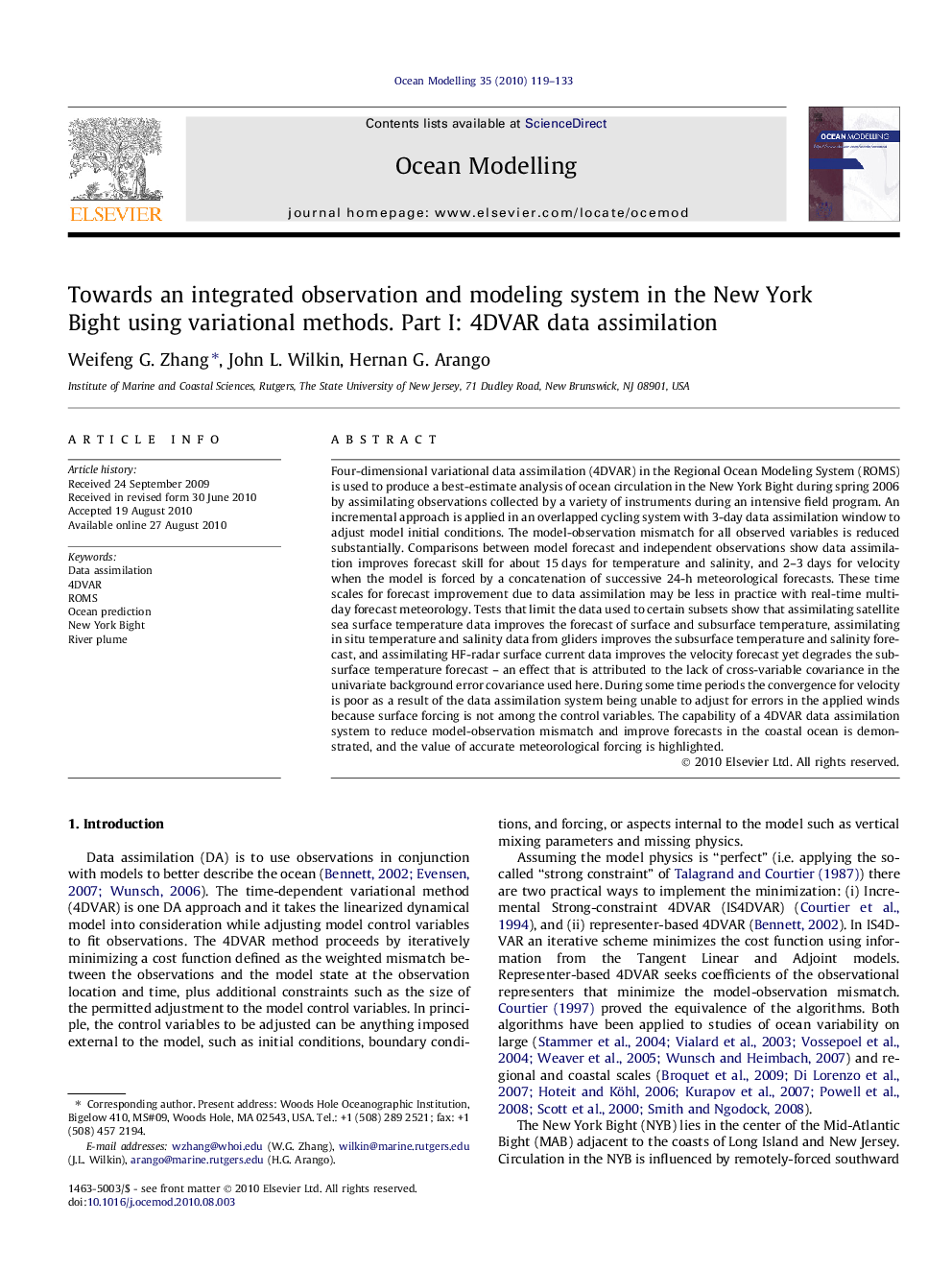| کد مقاله | کد نشریه | سال انتشار | مقاله انگلیسی | نسخه تمام متن |
|---|---|---|---|---|
| 4552359 | 1328714 | 2010 | 15 صفحه PDF | دانلود رایگان |

Four-dimensional variational data assimilation (4DVAR) in the Regional Ocean Modeling System (ROMS) is used to produce a best-estimate analysis of ocean circulation in the New York Bight during spring 2006 by assimilating observations collected by a variety of instruments during an intensive field program. An incremental approach is applied in an overlapped cycling system with 3-day data assimilation window to adjust model initial conditions. The model-observation mismatch for all observed variables is reduced substantially. Comparisons between model forecast and independent observations show data assimilation improves forecast skill for about 15 days for temperature and salinity, and 2–3 days for velocity when the model is forced by a concatenation of successive 24-h meteorological forecasts. These time scales for forecast improvement due to data assimilation may be less in practice with real-time multi-day forecast meteorology. Tests that limit the data used to certain subsets show that assimilating satellite sea surface temperature data improves the forecast of surface and subsurface temperature, assimilating in situ temperature and salinity data from gliders improves the subsurface temperature and salinity forecast, and assimilating HF-radar surface current data improves the velocity forecast yet degrades the subsurface temperature forecast – an effect that is attributed to the lack of cross-variable covariance in the univariate background error covariance used here. During some time periods the convergence for velocity is poor as a result of the data assimilation system being unable to adjust for errors in the applied winds because surface forcing is not among the control variables. The capability of a 4DVAR data assimilation system to reduce model-observation mismatch and improve forecasts in the coastal ocean is demonstrated, and the value of accurate meteorological forcing is highlighted.
Journal: Ocean Modelling - Volume 35, Issue 3, 2010, Pages 119–133